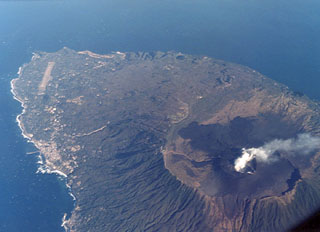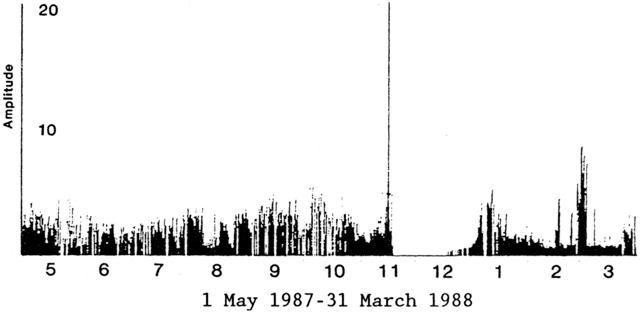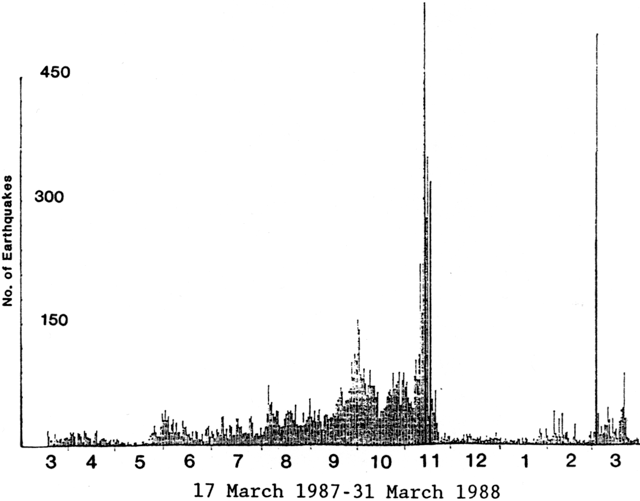Report on Izu-Oshima (Japan) — March 1988
Scientific Event Alert Network Bulletin, vol. 13, no. 3 (March 1988)
Managing Editor: Lindsay McClelland.
Izu-Oshima (Japan) Tremor and discrete seismic events; steam emission
Please cite this report as:
Global Volcanism Program, 1988. Report on Izu-Oshima (Japan) (McClelland, L., ed.). Scientific Event Alert Network Bulletin, 13:3. Smithsonian Institution. https://doi.org/10.5479/si.GVP.SEAN198803-284010
Izu-Oshima
Japan
34.724°N, 139.394°E; summit elev. 746 m
All times are local (unless otherwise noted)
Continuous tremor resumed on 18 January, then became intermittent on 15 February, although its amplitude increased 27 February-6 March (figure 14). As of 5 April, tremor was continuous but of low amplitude. Earthquake activity increased sharply 3-4 March (figure 15), with most events apparently centered under the summit cone. The number of events counted by the instrument in the caldera exceeded 275 on 3 March and 502 on the 4th, but declined to a typical rate of 13/day on 6 March. A white steam plume continuously rose 300-800 m above the summit crater. On 18 March, an 1,800-m white plume was observed from the Oshima Weather Station, the highest plume seen since the 18 November 1987 eruption.
Geological Summary. Izu-Oshima volcano in Sagami Bay, east of the Izu Peninsula, is the northernmost of the Izu Islands. The broad, low stratovolcano forms an 11 x 13 km island constructed over the remnants of three older dissected stratovolcanoes. It is capped by a 4-km-wide caldera with a central cone, Miharayama, that has been the site of numerous recorded eruptions datining back to the 7th century CE. More than 40 cones are located within the caldera and along two parallel rift zones trending NNW-SSE. Although it is a dominantly basaltic volcano, strong explosive activity has occurred at intervals of 100-150 years throughout the past few thousand years. A major eruption in 1986 produced spectacular lava fountains up to 1,600 m high and a 16-km-high eruption column; more than 12,000 people were evacuated from the island.
Information Contacts: JMA.



